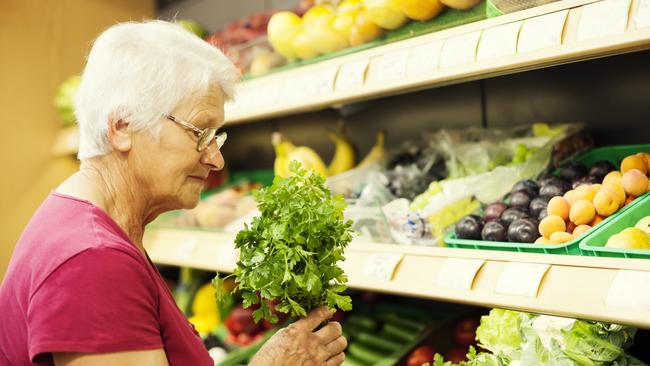Food inflation at Coles and Woolworths rose by 9.2pc in the December quarter
The cost of the weekly shop at Coles and Woolworths increased on average by 9.2 per cent in the December quarter, says UBS.
Food prices at Australia’s biggest supermarket chains Coles and Woolworths jumped by 9.2 per cent in the December quarter as inflationary pressures from food suppliers to the supermarket aisle continues to race ahead.
That’s up from 8.2 per cent in the previous three months to September.
A fresh report from investment bank UBS that surveyed more than 60,000 weekly prices across the heavyweight supermarkets found that inflation in fresh food and groceries was particularly rampant in the second quarter, gaining 9.6 per cent. Dried or packaged grocery inflation was slightly lower, although still strong, up 9 per cent for the quarter.
The stubbornly high inflation rate in the food sector, as well as throughout the Australian economy, could place further pressure on food and grocery manufacturers to lift their own prices again that could trigger a fresh outbreak of price hikes at the supermarket checkout.
It comes as households nervously await the latest inflation data, with the Australian Bureau of Statistics reporting December quarter inflation figures on Wednesday. Westpac's economists expect the data to show a 1.5 per cent quarter-on-quarter rise, taking the annual inflation figure to 7.4 per cent.
UBS analyst Shaun Cousins found that food inflation at Coles was 9.1 per cent in the December quarter (up from 8.1 per cent) and 9.3 per cent at Woolworths (up from 8.4 per cent).
“Looking forward, food inflation is expected to continue,” Mr Cousins said in his latest Australian supermarkets report.
“Trade feedback indicates cost pressures remain, for example supply chain, specific product inputs and are arguably still rising for dry grocery suppliers with further cost increases expected to support dry grocery inflation for the remainder of fiscal 2023.”

The supermarkets were handling the challenge of food inflation differently, Mr Cousins added, through the use of promotions and discounts.
“Coles and Woolworths promotions are diverging in the current rising inflation environment. Coles is maintaining promotional depth and breadth ahead of Woolworths, arguably reflective of it seeking to differentiate on price as per its period of market share gains in the early to mid 2010s and following market share losses in recent years.
“Woolworths is being more nuanced in moderating promotional breadth and especially depth given more sales drivers, for example, online, refurbished store network, fresh participation albeit cost of living pressures pose a risk to this approach.”






To join the conversation, please log in. Don't have an account? Register
Join the conversation, you are commenting as Logout